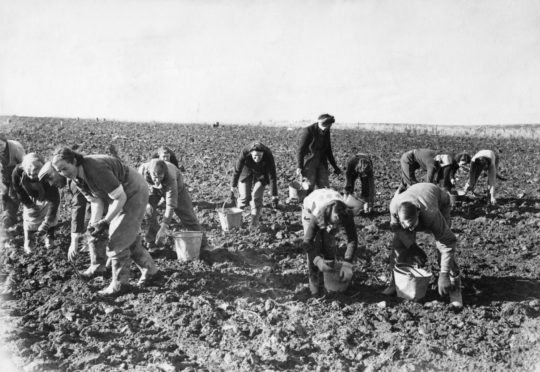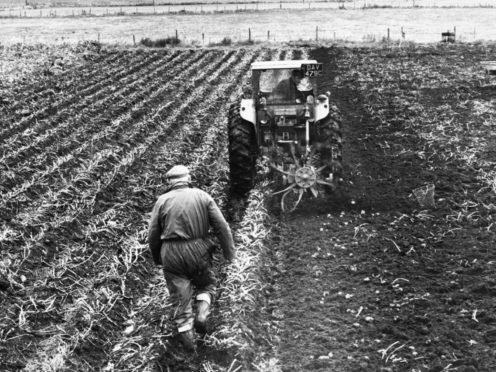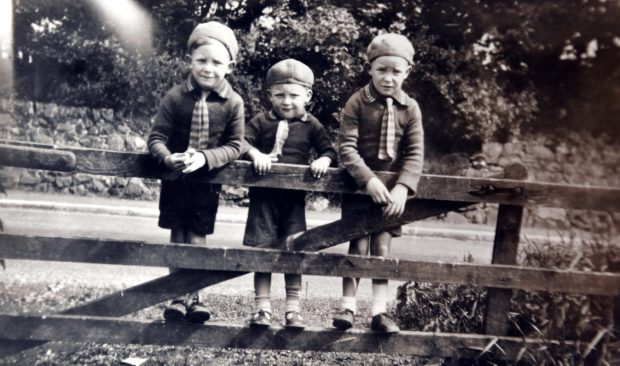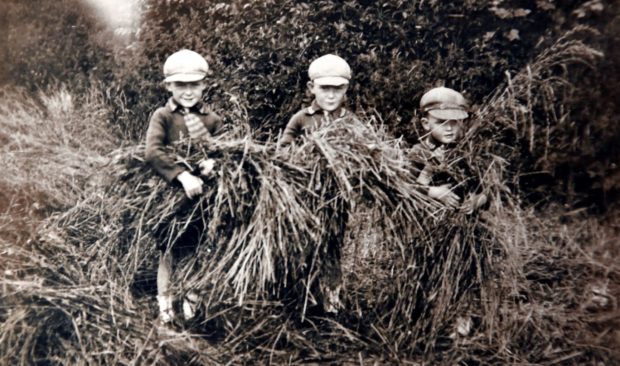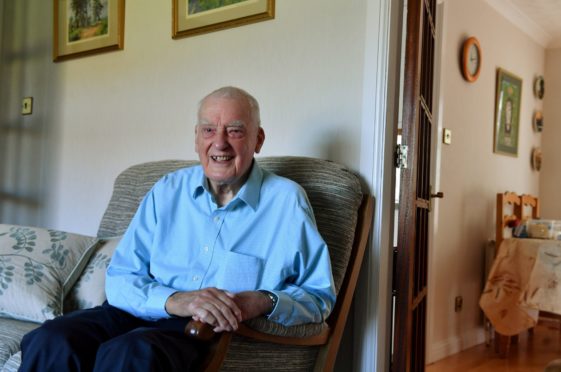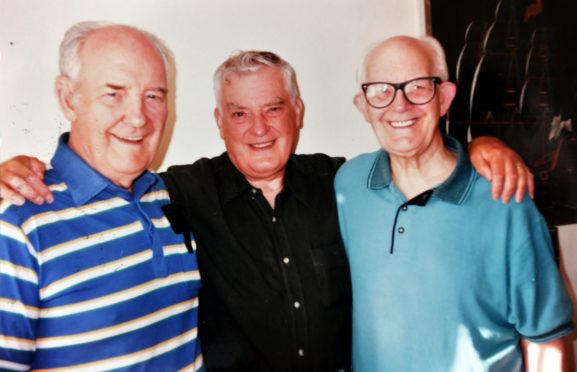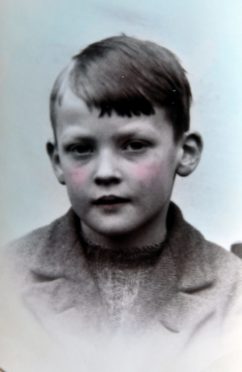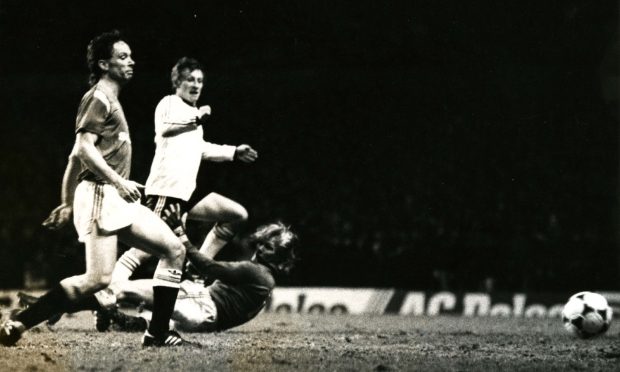It was back-breaking work for pickers who took the chance to earn extra income ‘tattie howkin’.
Schools closed during the Second World War to allow schoolchildren to supplement the labour supply to get the vitally important potato crop secured.
From first light children were out in frosty fields but they and their families were happy for the money — and a hard worker could make a decent day’s pay.
Extra income
Cyril, Sandy and Grant Caseby worked for local farmers in Newmills in Fife to provide extra income for the family.
Cyril, who is now 90, said: “Our father had been invalided home from Africa and coupled with his war injuries was not in a position to do full-time work for a long time and it was hard for our mother to bring up our large family, especially financially.
“Therefore any extra income during this spell was welcome.
“Farm work and hard work were no stranger to us boys as we had a very large garden to keep.”
Reverend Alexander Caseby was a Scottish missionary serving in Livingstonia, Malawi, from 1922 to 1929.
In 1929 he suffered from malarial fever, which rendered him seriously ill for several years, with recurrent illness throughout the rest of his life.
Cyril said: “The twins and I were involved in a lot of farm work during the war, not only tattie picking but starting with planting the tatties, then helping with bringing in the hay, then the grain harvest and latterly the threshing at the end of the year.
“The money was always welcome to the family.
“For the first two years of the war healthy schoolchildren were given time off school to help when most able-bodied men were away at war.”
The mums too relished the chance to earn extra cash and often theirs and the kids’ money helped pay for winter clothes.
Mums would take even the youngest of their family into the field with even the smallest bairns wrapped up in blankets and laid down in the drills.
This was before German prisoners of war were allowed to assist in picking potatoes alongside the Women’s Land Army which was resurrected in 1939 and put to farms.
Cyril said: “The Caseby boys were always willing volunteers.
“When I think back I had just turned nine when the war broke out and our secondary school was turned into a military hospital and the playing field was ploughed up.
“My education until I moved on to Dunfermline High School was in the village hall which was divided down the middle with a partition with 50-plus pupils in each class.
“The older pupils, including the twins, Sandy and Grant, who were 18 months older, continued their education in wooden huts.
“With time off to do the farm work and the time off because of the air raids, I often wonder how I managed to qualify to go to high school.”
Hellfire Corner
Cyril, who now lives in Aberdeen, said where he stayed in Fife at the time became known as “Hellfire Corner” as a result of night air raids when the noise of the anti-aircraft guns “was horrendous” and the lights in the sky and flashing bursting shells “was said to look like Hell itself”.
“One night our dad let us come out of the air raid shelter to see a German bomber in flames spiralling into the sea followed all the way down in the searchlights,” he said.
“We all cheered but not our mum who sobbed saying: ‘It is somebody’s bairns’.
“Such was war.
“If a raid lasted under three hours there was no school in the morning.
“If it lasted more than three hours there was no school at all the following day.
“If work was available we would do it but if not there were so many exciting things to do and see in wartime, especially for naughty boys.
“Our first tattie howkin trip was in October 1939, when I had just turned nine.
“The war was not long started and a farmer near High Valleyfield said that he needed help to lift his potatoes on a Saturday morning so off we three boys went.
“All went well and we were paid 1/9p each in old money which was 5/3p in total.
“On the way home, we got an ice cream each leaving 5/0p (25p in new money).
“We proudly handed it over to mum and she cried.
“I thought we had done something wrong but it was something to do with her wee boys growing up.
“As the years followed we were regulars at tattie howkin’ during the two weeks holiday in October.
“At first all farmers only used horses and the break was comfortably long giving you plenty of time for a seat after you picked your tatties and he came round again.
“But the dreaded tractor started to arrive and had to be avoided at all costs as it went round too fast.”
Tractor usage in the tattie field increased during the Second World War with mechanisation helping increase food production in times of labour shortages.
Cyril said: “Soon all the farmers had a tractor.
“The tattie dreels were paced out by the farmer and with sticks.
“He would mark out either a half stint or a full stint.
“The younger ones did the half and the grown-ups the full and were paid accordingly.
“We got to keep some of the money to ourselves and one year I became the proud owner of a second-hand bike.
“Sometimes the weather was not good in October and the work was not so enjoyable.
“The frost was so bad one morning some of us had to piddle on our hands to try to bring them back to life.”
Early rise
Cyril said it was an early rise in the morning with long walks through the fields then a long and tiresome journey home.
“We were allowed to take some of the tatties home,” said Cyril.
“At times we had to help fill the carts with the full baskets of tatties.
“The tatties were taken to pits which got longer as they were covered with straw then soil to keep them free from frost.
“They were only removed as required and by this old method, they retained their fresh earthy taste to the end.
“After the field was picked out came the harrows which consisted of heavy flat metal grating things with spikes below.
“These were dragged across the field to drag the shaws into rows prior to burning and to bring tatties trampled in on to the surface.
“To lift and lower these harrows was hard work and we all had to do turns.
“Next in pairs with a basket between us we had to walk over the field to pick up the bigger tatties with the small ones being left to be destroyed by the frost.
“When I see baby potatoes in the shops now I think of a farmer saying to me as he threw a small potato out of my basket: ‘What would your mother say if I tried to sell her that?’
“Thinking back it was a back-breaking job in sometimes terrible weather but the company was good and you certainly slept well during that fortnight.”
At its post-war height in 1949 nearly 44,000 Scottish school children flocked to the country’s potato fields to take part in a crucial harvest that helped keep Britain fed.
The heyday of the tattie harvest during the fifties and sixties brought men, women and children flooding into the fields of Angus and Perthshire from Dundee and Fife.
Cyril left school aged 14 to work in Rosyth Naval Dockyard before he got a job with the Coal Board in their maintenance and building department.
The future of the coal industry was uncertain when he gave that up to move north with his family when his father answered the call to take up the charge at Drumoak Parish Church on Deeside.
He soon found a job with Wm Briggs & Sons Ltd of Dundee (later Briggs Amasco) in their Aberdeen contracting office covering the Grampians, Highlands, and Islands.
He was to spend the next 40 years with them.
He eventually became the manager in Aberdeen then their Scottish Regional Director and finally Northern Area Director covering the top half of Britain.
Cyril said that his brothers Sandy, Grant and Charlie have all since passed away.
His sister Margaret also died.
But his younger brother Ronald is still alive at the age of 84.
Cyril’s own tattie journey went full circle following his retirement.
He said: “In recent years I had the opportunity to travel on a potato harvester and a combined harvester and marvelled at the progress that farming had made in my lifetime.”
